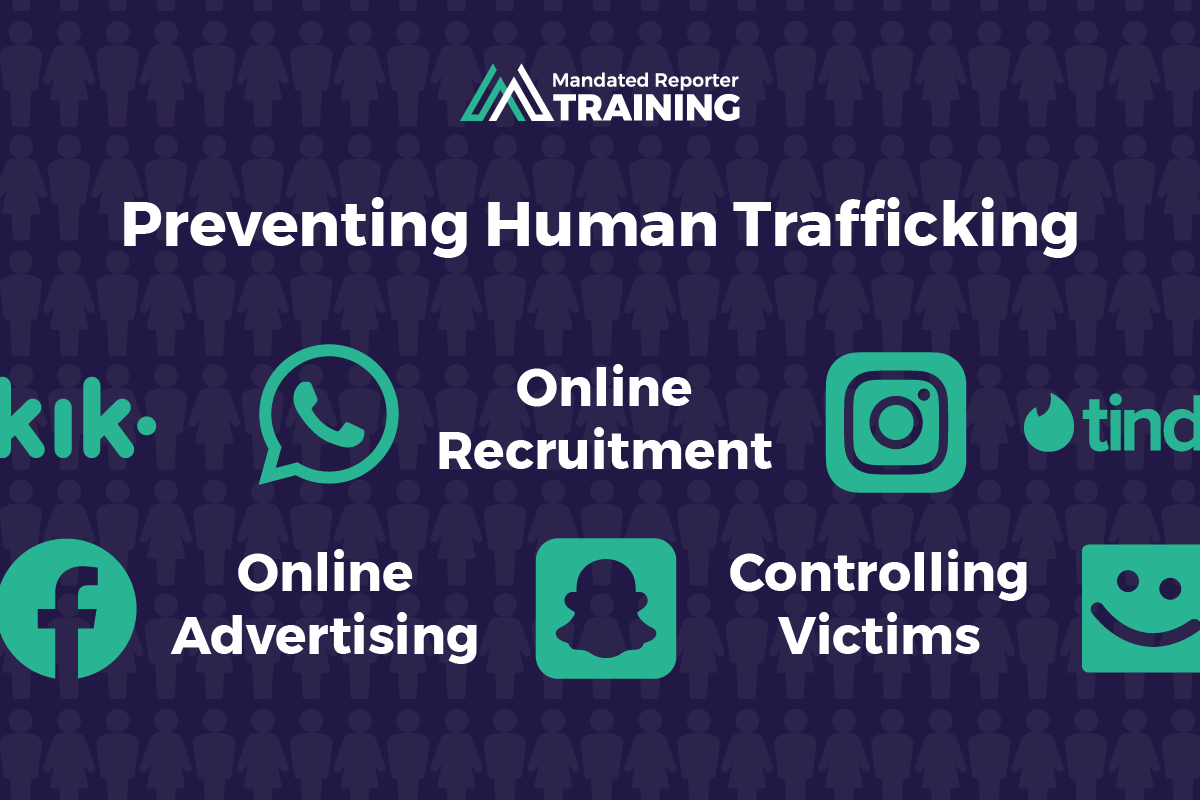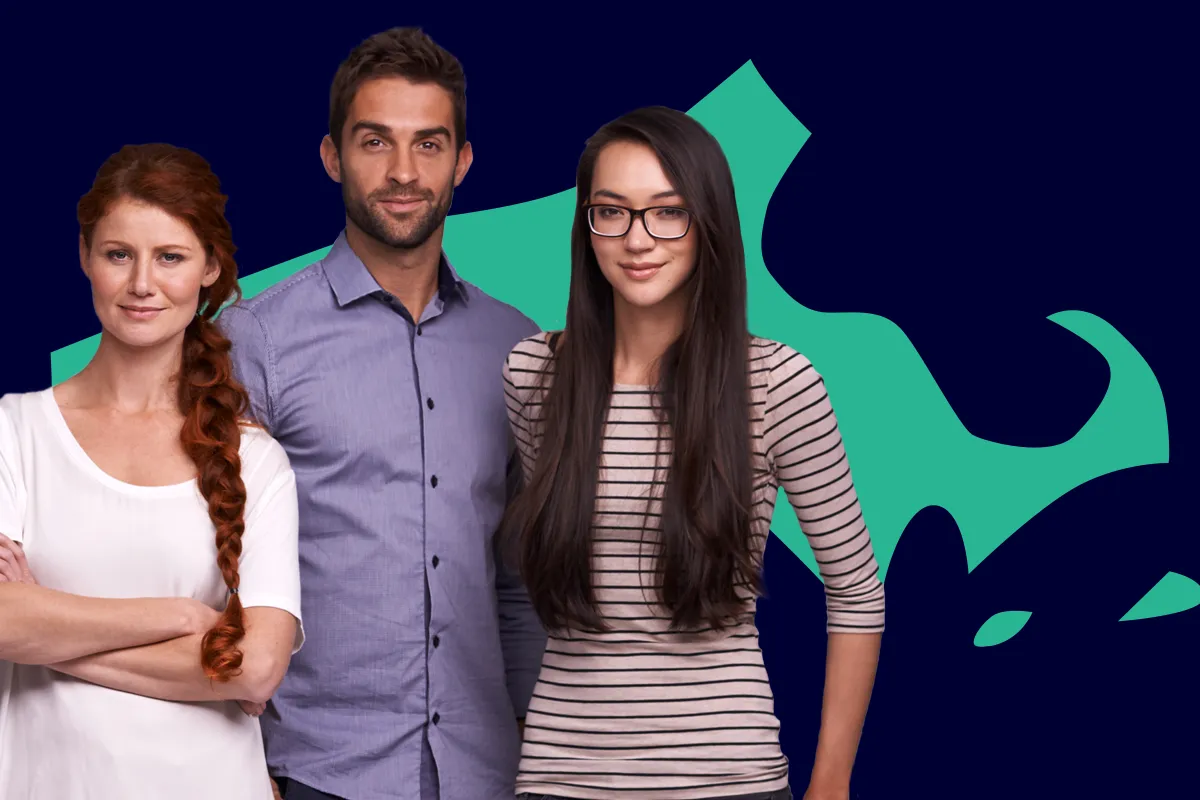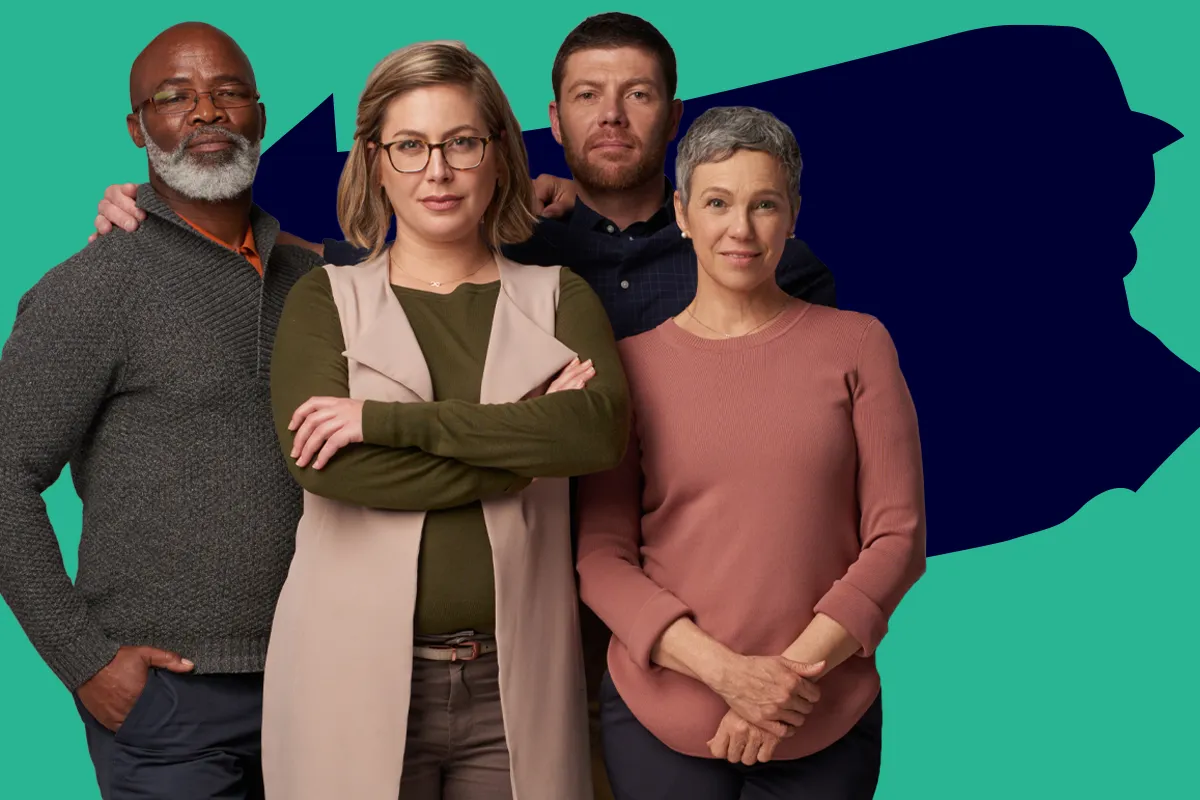Preventing human trafficking starts with an understanding of the issue. Human trafficking is considered a form of modern-day slavery that exploits adults and children in our local communities and all across the globe.
What Is Human Trafficking?
Human Trafficking Definition:
Human trafficking is the exploitation of a person or persons for sex or labor using force, fraud, or coercion. “Human trafficking” and “trafficking in persons” are interchangeable terms to describe these crimes.
What are the Types of Human Trafficking?
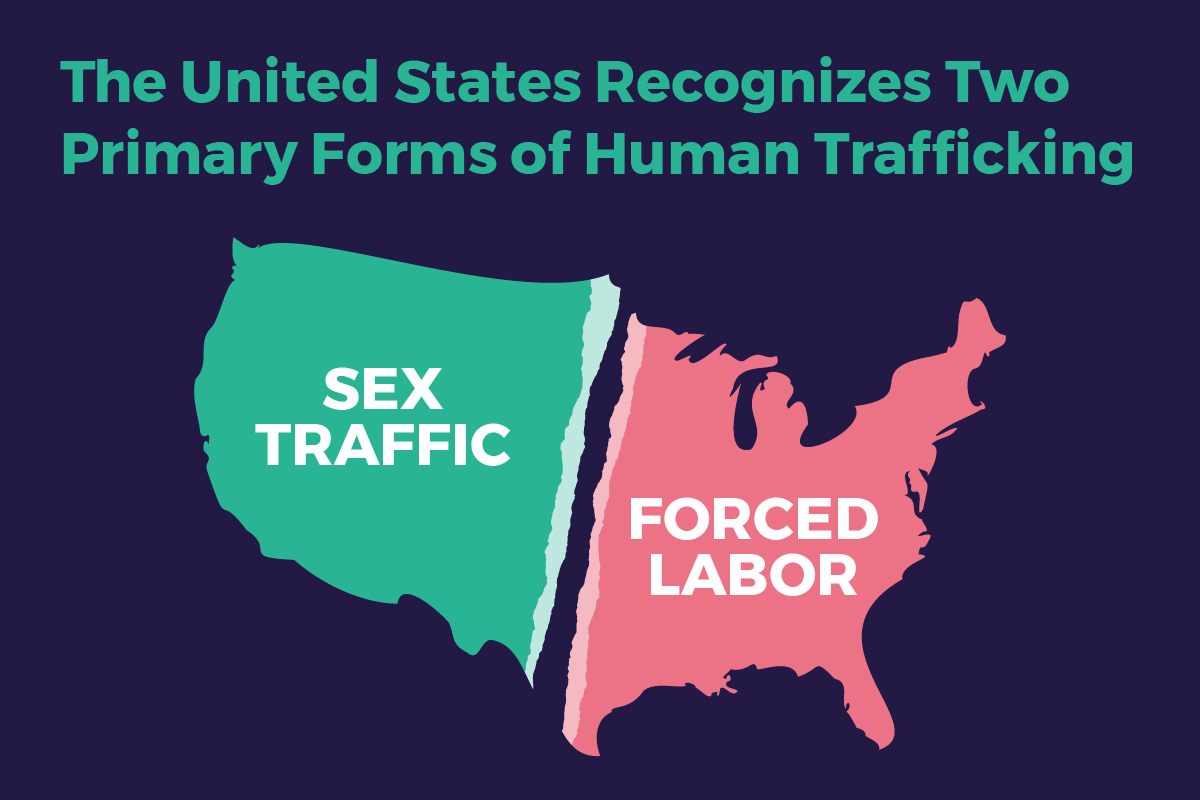
The United States recognizes two primary forms of human trafficking: forced labor and sex trafficking.
Forced labor: victims are forced, frauded, or coerced into working for low or no pay. Child labor is a form of trafficking, as is domestic servitude, where victims are forced to work in homes as nannies, maids, or domestic help.
Sex trafficking: victims are forced or manipulated into engaging in sex acts for money. Any form of commercial sexual exploitation of children is criminal trafficking, regardless of the circumstances and whether there is any force or coercion involved.
What is the Most Common Form of Trafficking in Persons?
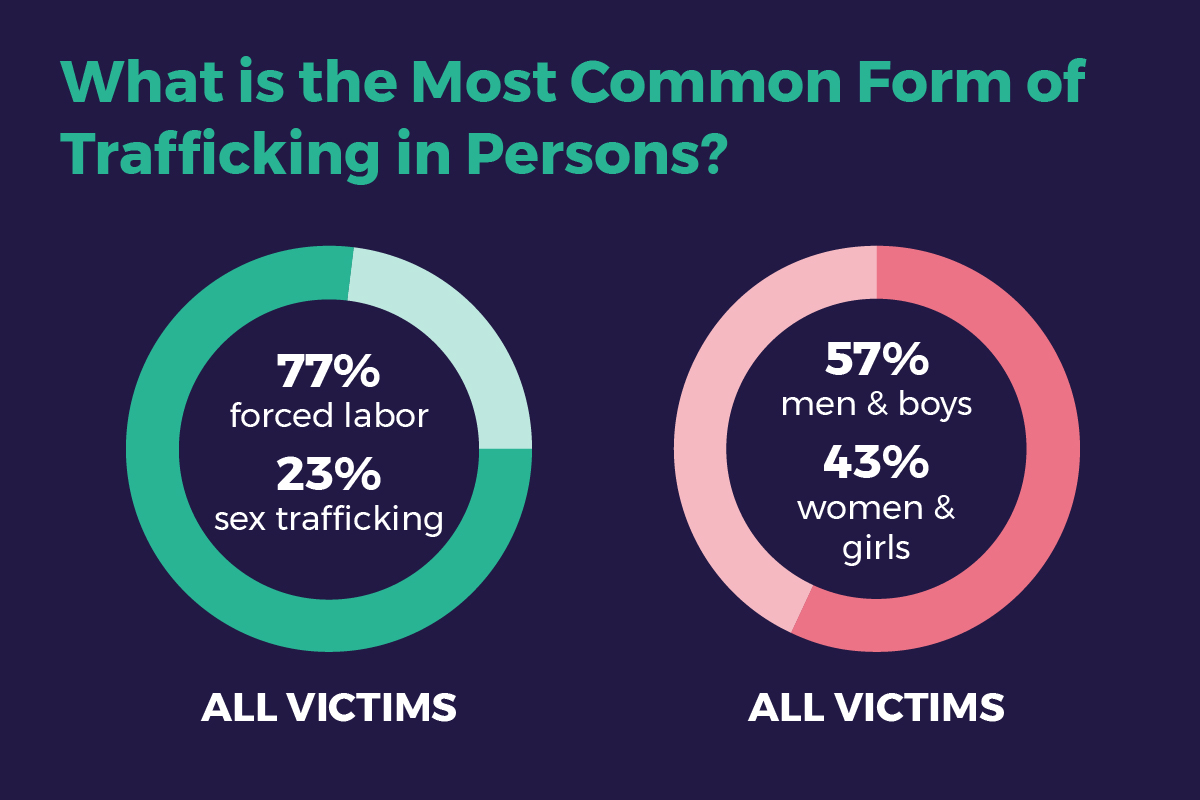
According to the International Labour Organization, 77% of global trafficking victims were forced into labor, and 23% were victims of sexual exploitation.
Gathering accurate data statistics on human trafficking can be challenging due to the hidden and illegal nature of the crime. Certain forms of trafficking may be more prevalent in specific regions.
In 2024, the U.S.-based National Human Trafficking Hotline received more reports of sex trafficking (6,647) than labor trafficking (2,220) or sex and labor combined (1,360).
How Many People are Human Trafficked Each Year?
While accurate numbers are difficult to assess, the United Nations' International Labour Organization estimates that human traffickers victimize an estimated 27.6 million people worldwide every year.
Although there is no reliable estimate of human trafficking within the United States, human trafficking has been reported in all 50 states and the District of Columbia, on Tribal land, and within U.S. territories.
The U.S. Department of Homeland Security (DHS) provides the following:
Human trafficking statistics:
- 77% of all victims are in forced labor
- 23% of all victims are in sex trafficking
- 57% are men and boys
- 43% are women and girls
Forced labor statistics:
- 33% are women and girls, and 67% men and boys
- 73% are adults and 27% are children
- Sex trafficking statistics:
- 78% are women and girls, and 22% are men and boys
- 92% are adults and 8% are children
How Much Has Human Trafficking Increased?
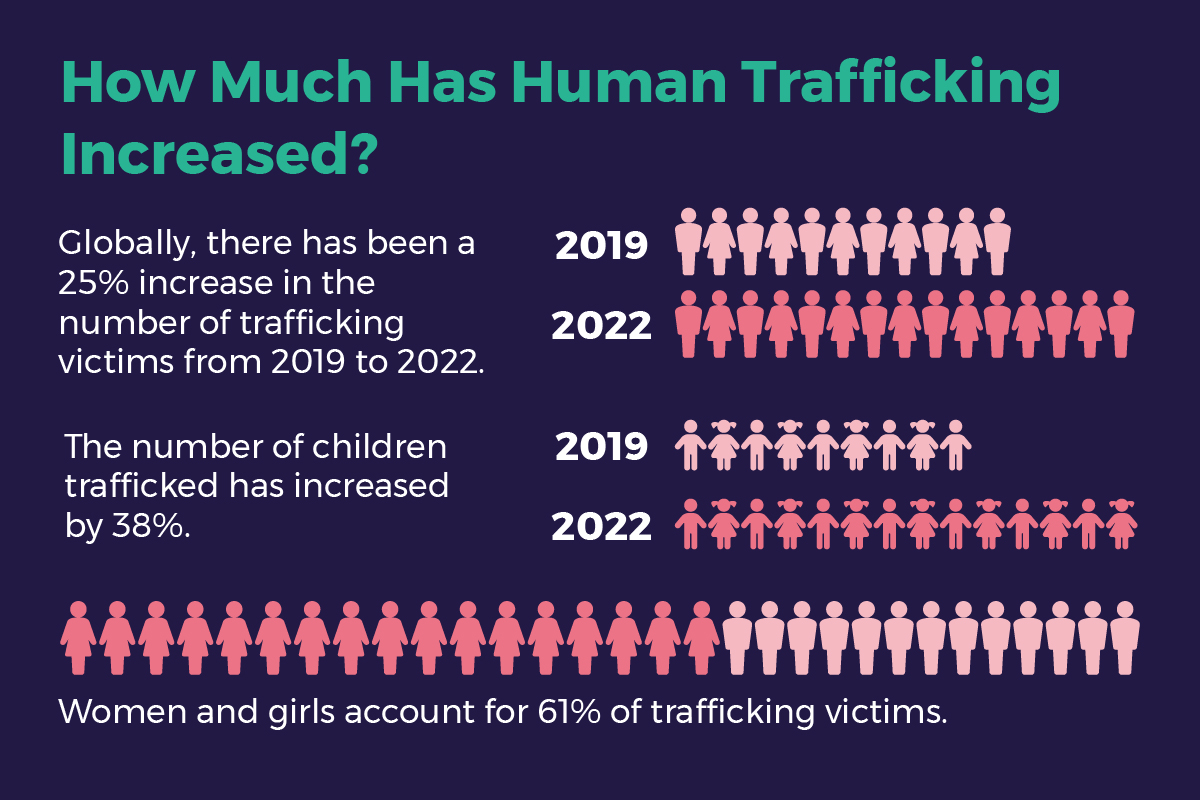
The United Nations has reported a global 25% increase in the number of trafficking victims between 2019 and 2022.
The number of children among detected victims is growing rapidly and alarmingly, increasing by a third over the space of three years. In particular, the number of girls detected has surged, increasing by 38%.
Women and girls remain the biggest percentage of reported victims worldwide, accounting for 61% of trafficking victims. The majority of women and girls are trafficked for sexual exploitation.
In several regions, children now account for the majority of trafficking victims detected.
Where are the Geographical Hot Spots for Trafficking?
Trafficking happens everywhere, from cities, suburbs, and rural areas, and affects people of all backgrounds and nationalities. However, data shows that certain geographical regions are more affected than others.
What US State has the Most Human Trafficking?
The National Human Trafficking Hotline released data on the number of confirmed cases of human trafficking between 2019 and 2023. Then Joslyn Law Firm compared those numbers to census data to determine which states had the most confirmed cases per 100,000 residents and found:
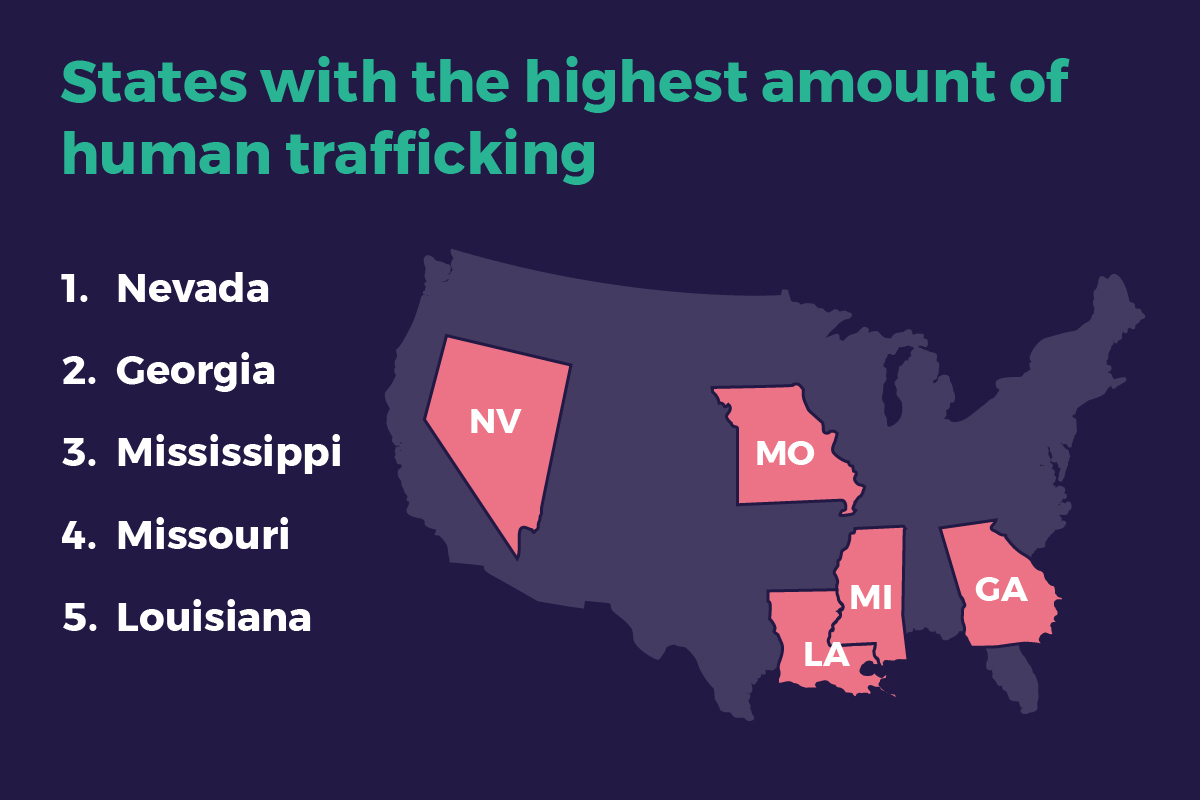
States with the Highest Amount of Human Trafficking per 100,000 Residents:
- Nevada
- Georgia
- Mississippi
- Missouri
- Louisiana
- Florida
- New Mexico
- California
- South Dakota
- Oregon
Ranking states based on victims per 100,000 residents allows for a more accurate risk profile compared to ranking by number of victims. For example, California is the largest state in terms of population, and therefore, it has the highest number of total human trafficking victims. However, it is ranked #8 in victims per 100,000 residents.
Which Countries or Global Regions Have the Most Trafficking?
According to the latest data provided by the International Labour Organization (ILO), the Asia and the Pacific region has the highest number of people in forced labour (15.1 million), and the Arab States have the highest prevalence (5.3 per thousand people).
How Technology and Social Media Support Human Trafficking
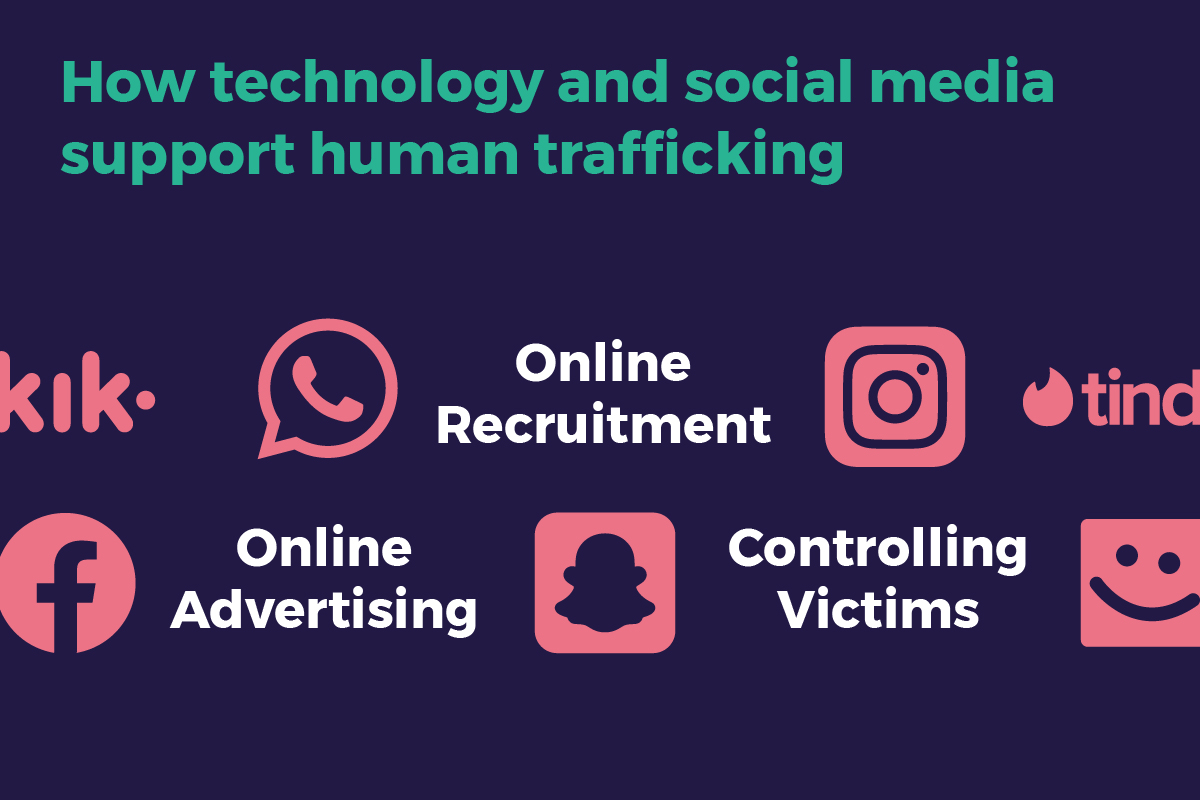
Digital technology is helping traffickers recruit, control, and coerce victims online.
The National Human Trafficking Hotline has recorded recruitment in all types of both sex and labor trafficking on mainstream social media platforms.
How many people get trafficked on social media?
Traffickers are harnessing the connective powers of social media to find, groom, and sell victims. It’s difficult to estimate the full impact of social media on trafficking because of the secretive nature and global scale.
In 2021, an estimated 41% of sex trafficking survivors were lured in through social media, an increase from previous years.
How are traffickers using technology?
Online Recruitment
Most individuals subjected to human trafficking were recruited online. The social media platforms being used by traffickers include, but are not limited to:
- Snapchat
- Kik
- MeetMe
Online dating sites/apps like Plenty of Fish, Tinder, and Grindr are also being used to recruit victims. “Human traffickers manipulate their victims into thinking that they are looking for a genuine relationship and then ultimately use force, fraud, or coercion to profit off of the victim,” warns the Polaris Project.
"[As a survivor advocate, I’ve seen] a huge influx [of social media recruitment] now… I was recruited off a dating website. I don’t think they had direct messaging on social media platforms back [when I was recruited]. But a lot of my clients are recruited off Facebook or Instagram. [Recruiters] send them direct messages… I have girls who are flown from all over the country… and they think they are coming to see a modeling agent."
Online Advertising
Child sex trafficking and commercial sexual exploitation have become abundant on social media sites where traffickers run advertisements that prey on vulnerable people. In 2020 alone, over 80% of sex trafficking cases were initiated through online advertisements.
Using Social Media to Control Victims
In a survivor survey by Polaris Project, 34% of respondents who had accessed social media noted that their trafficker restricted their social media use in some way.
In some cases, this meant actively keeping victims away from their online networks.
In others, the methods are more insidious. 32% of survivors in Polaris’s survey indicated that their traffickers stalked or monitored their social media accounts, most commonly checking up on victims' private messages.
Hope: A Digital Escape
Even though social media, online dating apps, and other digital platforms are being used to recruit, coerce, control, and advertise human trafficking victims, these platforms can also provide a lifeline and a way out for victims.
In Polaris’s survivor survey, 19% of survivor respondents stated that social media played a role in their exit, and 20% disclosed that they utilized private messages on social media apps to communicate with service providers.
Causes and Risk Factors for Human Trafficking
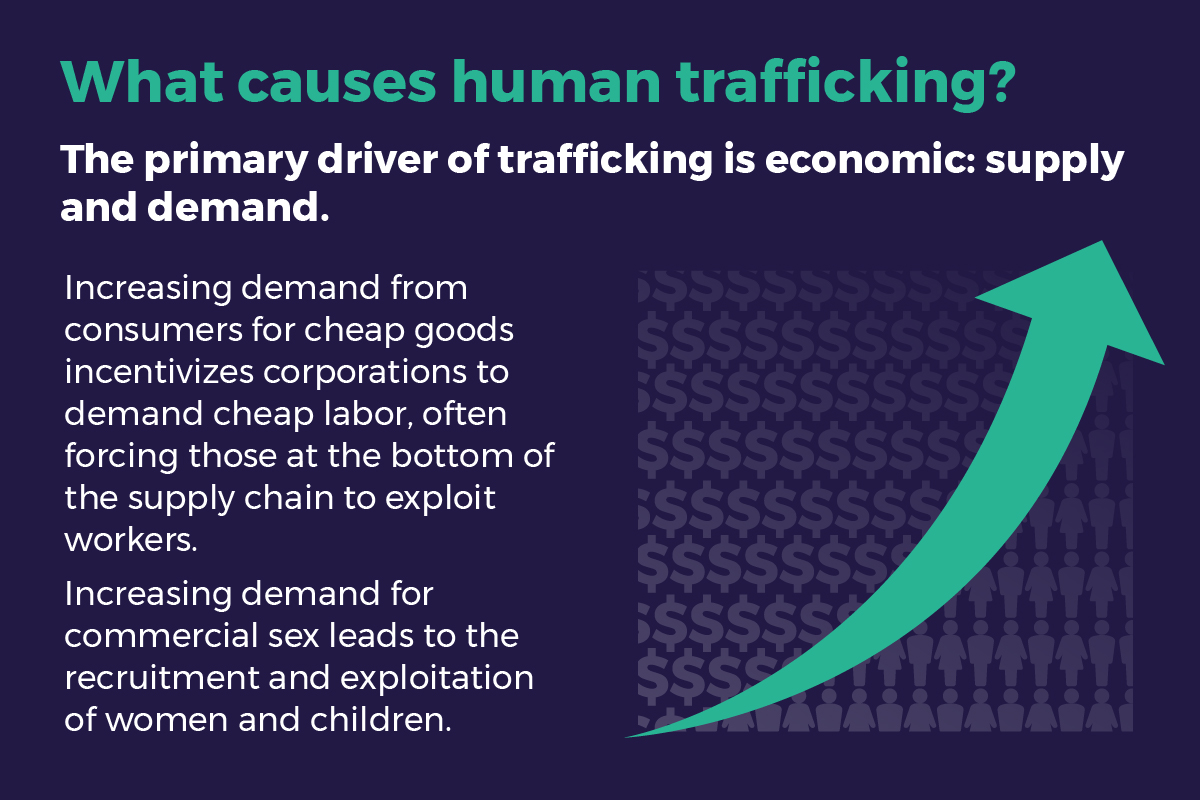
What causes human trafficking?
According to UNICEF, trafficking is one of the most profitable illegal industries. Traffickers, fueled by a high-reward, low-risk dynamic, can expect to make a lot of money with minimal fear of punishment or legal consequence.
While trafficking is a complicated issue with many contributing factors, its primary driver is economic: supply and demand.
- Increasing demand from consumers for cheap goods incentivizes corporations to demand cheap labor, often forcing those at the bottom of the supply chain to exploit workers.
- Increasing demand for commercial sex leads to the recruitment and exploitation of women and children.
How much money does human trafficking generate annually?
Human trafficking generates an estimated $150 billion annually. This rivals mainstream entertainment sectors; the global video game market generates $184 billion annually, and the global film and TV streaming market generates $160 billion.
Global trafficking generates almost the same amount as a mid-sized national economy such as Kuwait ($164 billion) or the entire state economy of Nevada, U.S. ($186 billion).
Who is at Risk for Trafficking?
While anyone can be trafficked, there are certain vulnerabilities that traffickers seek out when selecting a victim. Generational trauma, historic oppression, discrimination, and other societal factors and inequities can create community-wide vulnerabilities. Traffickers often recognize and take advantage of people with personal or societal vulnerabilities.
Vulnerabilities that can lead to recruitment include:
- Unstable living situations
- History of domestic violence
- Caregivers with substance use disorders
- Runaways or unhoused youth
- Involvement in the foster care or juvenile justice system
- Undocumented immigrants
- Facing poverty or economic hardship
- History of sexual abuse
- Personal substance use disorders
Indigenous People
In a National Indigenous Women’s Resource Center study of four sites in the United States and Canada, Native Americans represented 40% of those trafficked, even though they accounted for only 10% of the population in those areas.
LGBTQ+ Youth
LGBTQ+ youth are at disproportionate risk for sex trafficking and sexual exploitation. In fact, even among runaway/homeless youth, LGBTQ+ youth experience commercial sexual exploitation at greater rates than their heterosexual cisgender counterparts.
Runaways and Unhoused Youth
According to the National Network for Youth, one in five runaways and unhoused youth are victims of human trafficking. Unhoused youth often lack basic needs, such as a safe place to sleep. They may also suffer from early trauma, such as experiencing physical or emotional abuse by parents or caregivers, or have a history of sexual abuse. Childhood sexual abuse can increase the risk for sex trafficking, in particular.
Financially Vulnerable Persons
Human traffickers may target the financially vulnerable. Persons living in poverty, unemployed, or unable to meet basic needs, such as food or shelter. These individuals are targeted with offers of employment or commercial sex to meet these needs. Finances are used as a means of control to prolong the exploitation, according to the United Way.
Who are Traffickers?
Traffickers can be part of organized crime networks, gang members, employers, and business owners.
Traffickers aren’t always a nameless, faceless member of a criminal organization; very often, traffickers are friends, family, or intimate partners of their victims. Traffickers can also be victims of violence and abuse themselves, sometimes groomed to become exploiters by those close to them.
New data from the Counter Tracking Data Collaborative (CTDC) reveals a shocking finding:
Family members are involved in nearly half of all child trafficking cases.
Family involvement in the trafficking of children is 4 times higher than in cases of adult trafficking.
Trafficking Warning Signs and Identification
Learning the types of trafficking and the possible indicators, or red flags, of trafficking could help you report it. Here are some red flags to watch out for, according to the Human Trafficking Hotline.
Recognizing Labor Trafficking
Labor trafficking includes situations where men, women, and children are forced to work through threats and/or violence. Keeping victims isolated, physically or emotionally, is a key method of control in most labor trafficking situations. But that does not mean you never cross paths with someone who is experiencing trafficking.
Someone may be experiencing labor trafficking or exploitation if they:
- Feel pressured by their employer to stay in a job or situation they want to leave.
- Owe money to an employer or recruiter, or are not being paid what they were promised.
- Do not have control of their passport or other identity documents.
- Living and working in isolated conditions, largely cut off from interaction with others or support systems.
- Appear to be monitored by another person when talking or interacting with others.
- Are being threatened by their boss with deportation or other harm.
- Are working in dangerous conditions without proper safety gear, training, adequate breaks, or other protections.
- Are living in dangerous, overcrowded, or inhumane conditions provided by an employer.
Recognizing Sex Trafficking
Sex trafficking occurs when individuals are made to perform commercial sex through the use of force, fraud, or coercion. Any child under 18 who is involved in commercial sex is legally a victim of trafficking, regardless of whether there is a third party involved.
Someone may be experiencing sex trafficking if they:
- Want to stop participating in commercial sex but feel scared or unable to leave the situation.
- Disclose that they were reluctant to engage in commercial sex but that someone pressured them into it.
- Live where they work or are transported by guards between home and workplace.
- Have a “pimp” or “manager” in the commercial sex industry.
- Work in an industry where it may be common to be pressured into performing sex acts for money, such as a strip club, illicit cantina, go-go bar, or illicit massage business.
- Have a controlling parent, guardian, romantic partner, or “sponsor” who will not allow them to meet or speak with anyone alone or who monitors their movements, spending, or communications.
Common Industries for Human Trafficking
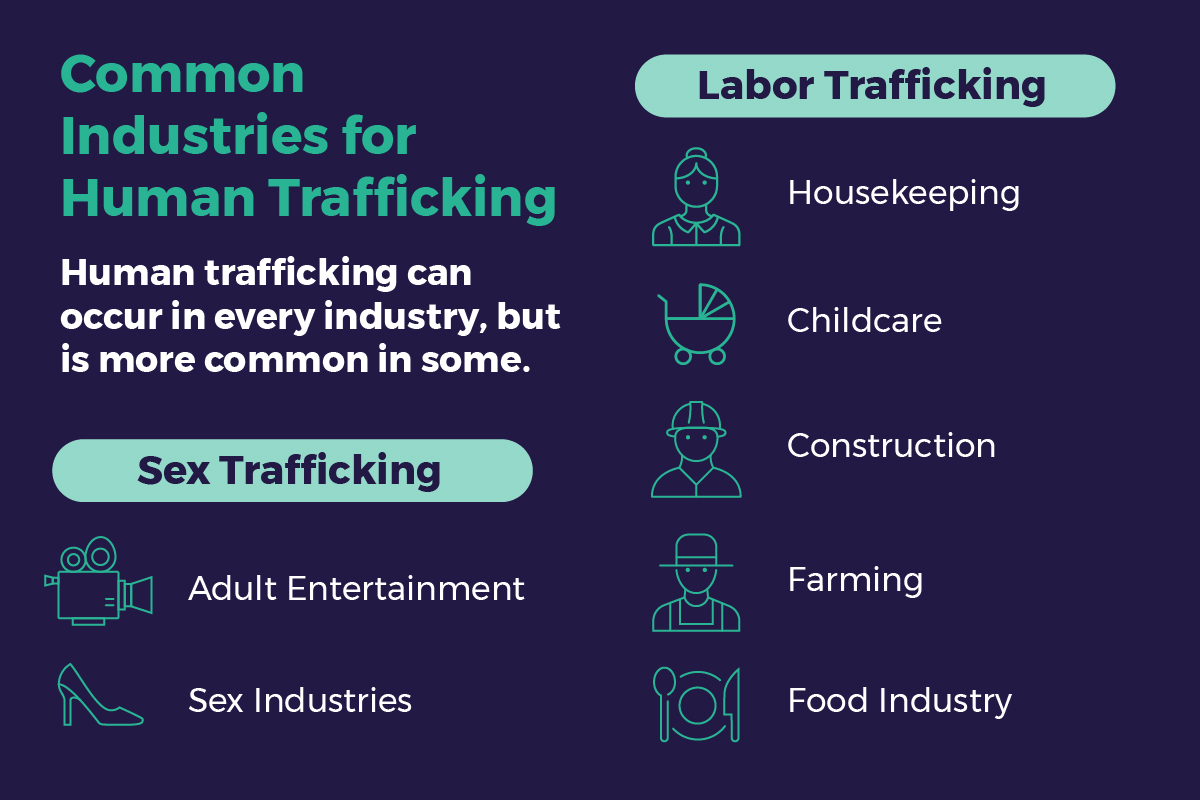
Forced labor can occur in every industry, but housekeeping, childcare, construction, farming, and the food service industries are particularly vulnerable.
Commercial sex trafficking may be found in industries such as stripping, illicit massage, escort, prostitution, and pornography industries, among others.
How to Spot Human Trafficking
Certain employees, such as hotel workers or people in the transportation industries, may be more likely to spot human trafficking.
How to spot human trafficking in hotels and motels:
Hotels and motels are critical sites for both sex and labor trafficking business operations, but sex trafficking is more common in these locations. Of the human trafficking cases reported to be occurring in a hotel, 81% involved the escort services business model.
In one survey of LGBT youth who were involved in New York’s sex trade economy (mostly engaged in survival sex), 57% stated that they traded sex with customers at hotels.
Learn how to spot human trafficking at hotels.
How to spot human trafficking in the transportation industry:
Like any business, human trafficking depends on transportation systems to operate. Bus and train stations can be recruitment hotspots for homeless youth seeking shelter. Taxis, ride-sharing services, and rental cars are used to run escort services, while foreign workers trafficked on temporary U.S. work visas are often fraudulently made to pay for plane tickets.
Learn how to spot human trafficking in transportation hubs.
Reporting and Hotlines
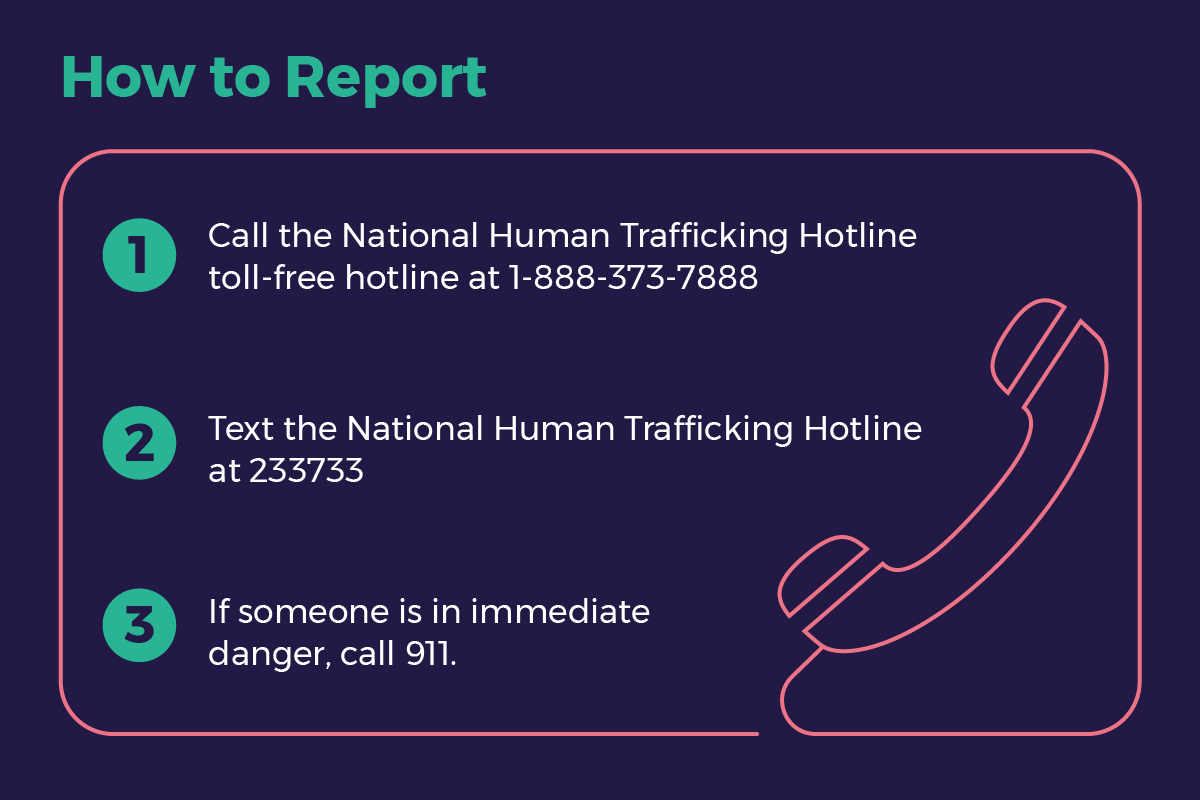
If you believe you may have information about a trafficking situation:
- Call the National Human Trafficking Hotline toll-free hotline at 1-888-373-7888: Anti-Trafficking Hotline Advocates are available 24/7 to take reports of potential human trafficking.
- Text the National Human Trafficking Hotline at 233733. Message and data rates may apply.
- If someone is in immediate danger, call 911.
